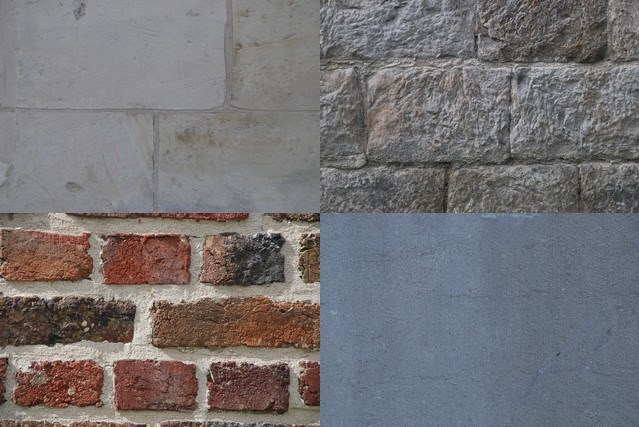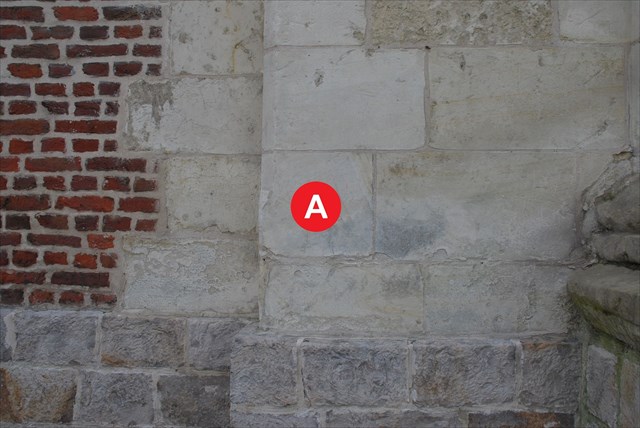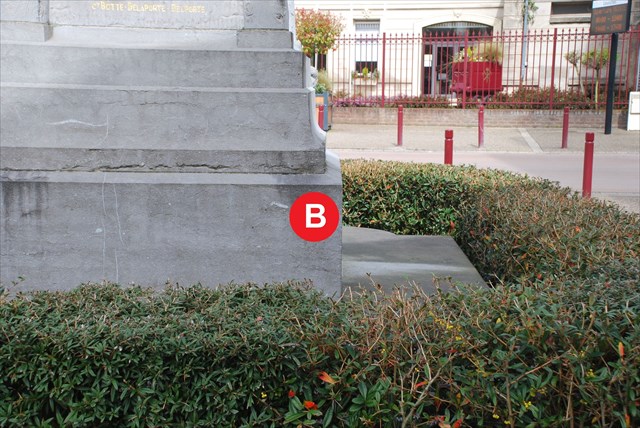[GN16] Le Patrimoine Lourchois EarthCache
[GN16] Le Patrimoine Lourchois
-
Difficulty:
-

-
Terrain:
-

Size:  (other)
(other)
Please note Use of geocaching.com services is subject to the terms and conditions
in our disclaimer.
FRANCAIS
La petite commune de Lourches, près de Valenciennes, possède un bien classé par l’UNESCO au patrimoine mondial de l’humanité : le Monument à Charles Mathieu, fondateur des mines de Douchy en 1832. Plus généralement, son patrimoine architectural nous offre une belle illustration des matériaux traditionnellement utilisés dans les villes du Hainaut :
 De gauche à droite et de haut en bas : Craie, grès, brique et pierre bleue
De gauche à droite et de haut en bas : Craie, grès, brique et pierre bleue
La craie est une roche sédimentaire calcaire souvent blanche formée par l'accumulation de squelettes de microorganismes marins (les coccolithes).
Le grès est une roche sédimentaire d'origine détritique formée par cimentation de grains de sable. Elle peut prendre des teintes variables en fonction de sa composition chimique : gris, orangé, brun.
La brique est constituée d'argile cuite.
La pierre bleue est une roche sédimentaire de teintes variables (gris, gris-bleu à bleu-noir) constituée d'organismes marins et de particules d'argile cimentés par une boue calcaire. Elle est souvent riche en fossiles.
Les coordonnées sont celles du parking. Comme pour toutes les earthcaches, l’objectif n’est pas de découvrir une boîte.
Pour valider votre visite, il vous suffit de vous rendre aux différents points de référence indiqués. Le descriptif ci-dessus vous aidera à valider cette earthcache en répondant aux questions suivantes :
1- Lequel des quatre matériaux décrits ci-dessus n'a pas été utilisé pour édifier l'église de l'Assomption ?
2- Quel matériau constitue à la fois l’obélisque du Monument aux Morts et la base du Monument à Charles Mathieu ?
3- Lequel des deux fossiles A et B figurant sur les photos ci-dessous est le plus grand ?


Après avoir visité l'ensemble des points de référence, loguez cette earthcache "Found it" et envoyez-moi vos propositions de réponses soit via mon profil, soit via le Message Center. Je vous contacterai en cas de problème.
|
ENGLISH
The small town of Lourches , near Valenciennes , has a monument listed on the UNESCO world heritage: the Monument to Charles Mathieu , founder of Douchy mines in 1832. More generally, Lourches architectural heritage offers us a beautiful illustration of materials traditionally used in cities of Hainaut area:

From left to right and top to bottom: Chalk, sandstone, brick and blue stone
Chalk is often a white calcareous sedimentary rock formed by the accumulation of skeletons of marine microorganisms (the coccolith.
Sandstone is a sedimentary rock of detrital origin formed by cementing sand grains. It may take different hues depending on its chemical composition: gray, orange, brown.
Brick is made of fired clay.
Blue stone is a sedimentary rock of varying colors (gray, blue-gray to blue-black) made of marine organisms and clay particles cemented together by calcareous mud. It is often rich in fossils.
The coordinates are those of the parking. As with all Earthcaches, the goal is not to find a box.
To validate your visit, you simply go to the different indicated places. The above description will help you validate this earthcache by answering the following questions:
1- Which of the four above-described materials was not used in the building of the Church of the Assumption?
2- Which material is both used for the obelisk of the war memorial and the base of the Monument to Charles Mathieu?
3- Which of the two fossil A and B in the photos below is the biggest?


After visiting the place, log this earthcache "Found it" and send me your answers proposals either via my profile or via the Message Center. I will contact you in case of problem.
|
Additional Hints
(No hints available.)